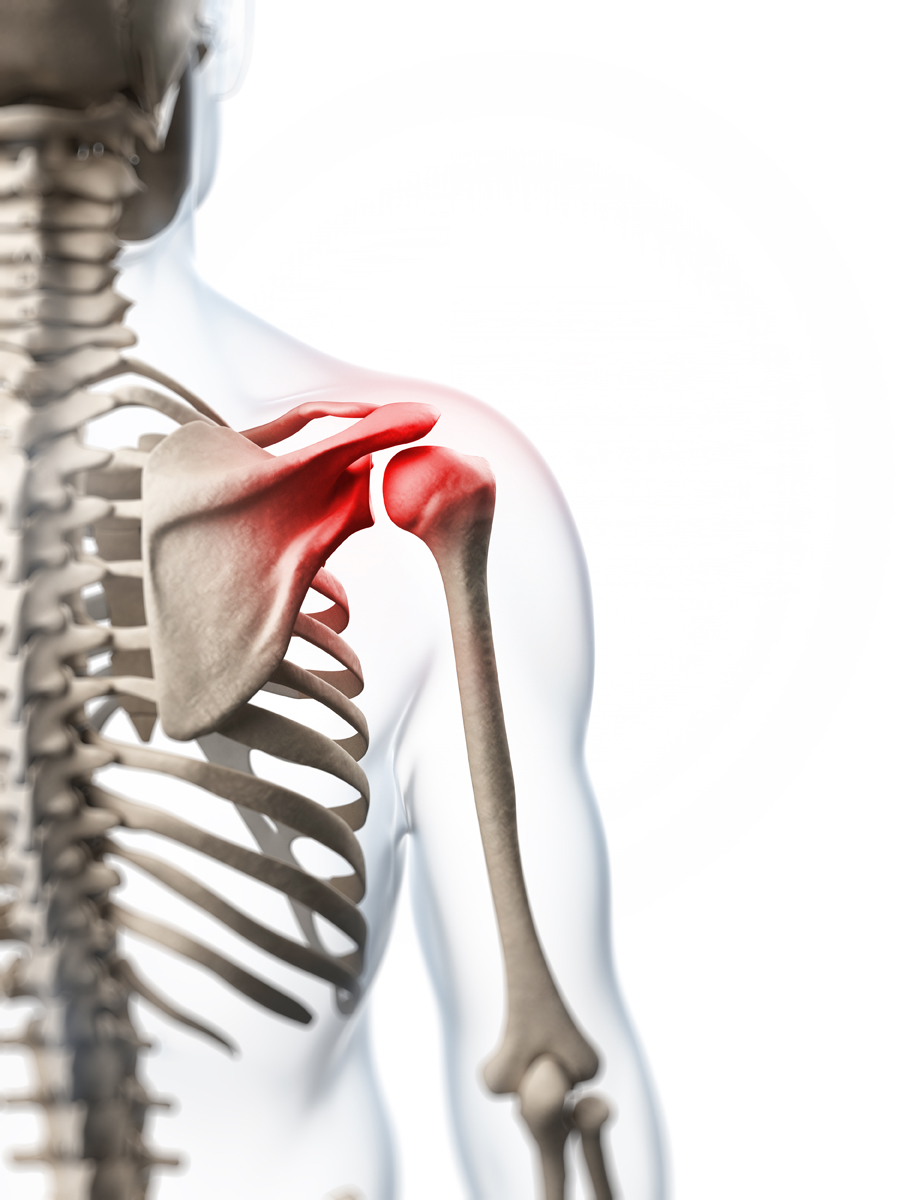Rotator cuff injury and inflammation is one of the most common causes of shoulder pain. There are three common conditions that can affect the rotator cuff: rotator cuff tendonitis, rotator cuff impingement syndrome and a rotator cuff tear. Most people with rotator cuff problems can be successfully treated by a combination of rest, painkillers, anti-inflammatories, physiotherapy and steroid injections. Surgery is sometimes an option.
The shoulder joint
There are three bones in the shoulder region, the clavicle (collar bone), the scapula (shoulder blade) and the humerus (upper arm bone). The scapula is a triangular-shaped bone that has two important parts to it: the acromion and the glenoid. The three bones in the shoulder region form part of two main joints:
- The acromioclavicular joint between the acromion of the scapula and the clavicle.
- The glenohumeral joint between the glenoid of the scapula and the humerus.
There are also a number of muscles, ligaments and tendons around the shoulder. Ligaments are fibres that link bones together at a joint. Tendons are fibres that attach muscle to bone.
What is the rotator cuff?
The rotator cuff is a group of four muscles that are positioned around the shoulder joint. The muscles are named:
- Supraspinatus
- Infraspinatus
- Subscapularis
- Teres minor
The rotator cuff muscles work as a unit. They help to stabilise the shoulder joint and also help with shoulder joint movement. The four tendons of the rotator cuff muscles join together to form one larger tendon, called the rotator cuff tendon. This tendon attaches to the head of the humerus (the bony surface at the top of the upper arm bone). There is a space underneath the acromion of the scapula, called the subacromial space. The rotator cuff tendon passes through here.
What are the types of rotator cuff injury/inflammation?
There are a number of different problems that can affect the rotator cuff and lead to rotator cuff injury or inflammation. The most common problems include rotator cuff tendonitis.
Who gets rotator cuff tendonitis?
Rotator cuff tendonitis is the most common cause of shoulder pain.
What causes rotator cuff tendonitis?
Rotator cuff tendonitis is caused by irritation and inflammation of the tendons of the rotator cuff muscles. It tends to have an acute (sudden) onset. There is often a specific preceding injury. It can happen because of recent overuse of the shoulder. For example, it can occur in athletes, particularly those who participate in throwing sports. In non-athletes, there may be a history of recent heavy lifting or activities involving repetitive movements of the shoulder. Sometimes the rotator cuff tendons can become calcified. This is when calcium is deposited in the tendons, due to long-standing inflammation. This is called calcific tendonitis.
What are the symptoms of rotator cuff tendonitis?
The main symptoms are an acute (sudden) onset of pain and painful movement of the shoulder. Pain is worst when you use your arm for activities above your shoulder level. This means that the pain can affect your ability to lift your arm up – for example, to comb your hair or dress yourself. Swimming, basketball and painting can be painful but writing and typing can produce little in the way of pain. Pain may also affect sleep.
How is rotator cuff tendonitis diagnosed?
Your doctor is usually able to make the diagnosis just by talking to you and examining your shoulder. They usually start by asking questions about your shoulder. These questions may include when your shoulder problems started, whether you have had any specific injury and what aggravates your shoulder problem. They may then perform an examination of your shoulder. This usually involves moving your shoulder in various positions. One of the tests that can help to diagnose rotator cuff tendonitis is called the painful arc test. Your doctor may ask you to start with your arm by your side and then lift your arm outwards from your side in an arc. In rotator cuff tendonitis, pain is usually felt at a maximum between 70 and 120° in this arc. Occasionally, your doctor may suggest an X-ray of your shoulder or they may refer you for more detailed investigations such as an ultrasound scan or an MRI scan.
In the last few years, the knowledge surrounding spinal decompression and laser therapy has grown by leaps and bounds. This research benefits those suffering from many spinal and non-spinal conditions, ranging from: Lower Back Pain, to Rotator Cuff Tears, Plantar Fasciitis, to Coccydynia (tailbone pain), and a multitude of other painful conditions.
In short, the combination of Decompression and Laser Therapy is unmatched. These allow physiological benefits that no other modality can deliver and are very safe when performed by a properly trained technician. This is how we help many people avoid spinal surgery.
Not all conditions are amenable to decompression. If our screening method does not indicate decompression as beneficial, we will let you know.


Recent Comments